Being the first can be an honour or a burden. It can put you in the spotlight and in the Guinness Book of Records, or it can place you under excessive scrutiny. It can give you an advantage or a disadvantage. It can be a goal in itself or a happy coincidence.
For Kathryn Sargent, being the first woman to reach certain career steps on London’s legendary Savile Row has become a bit of a habit. Although breaking the glass ceiling of the genteel ateliers and traditional workshops was never her main goal, she has blazed a trail on the “golden mile of tailoring”, a place once dedicated exclusively to tailoring for men, by men.
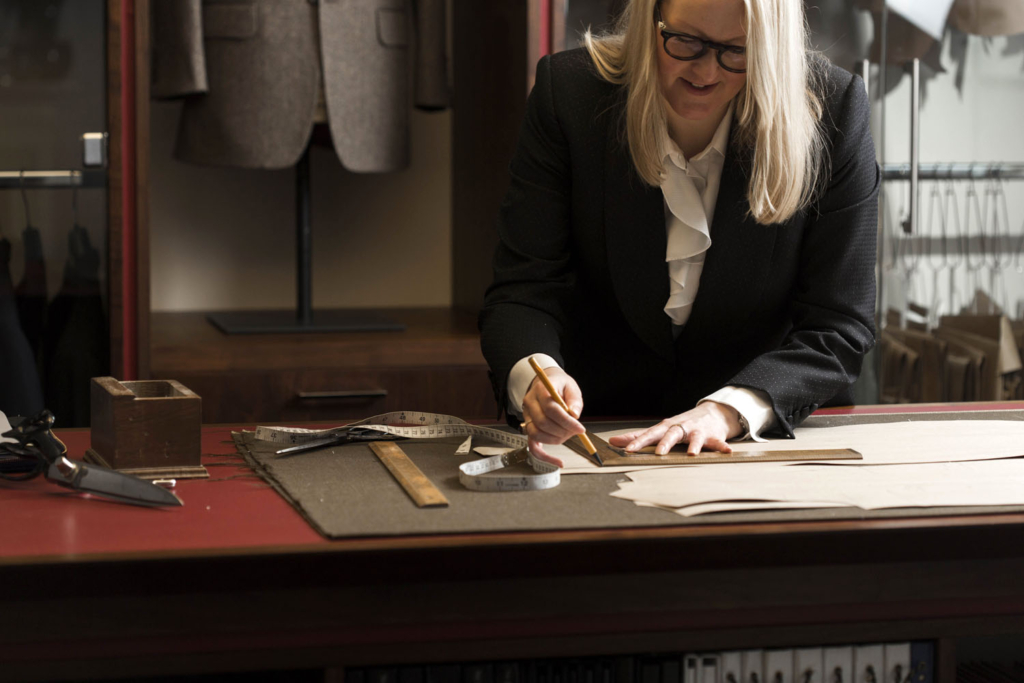
The Tenacious Tailor
Kathryn Sargent’s Savile Row journey began while she was still at fashion college. A “student job” at a small but highly regarded tailor’s shop gave her the opportunity to work alongside tailors who had been in the trade for many years. That experience planted the first seed of a dream: to make her mark on the world of bespoke tailoring. Her greatest ambition at the time? To become the Head Cutter of a large historical house on Savile Row.
After graduation, the seed germinated into an apprenticeship at Gieves & Hawkes (working alongside one of the last members of the founding families, Mr Robert Gieve). Her 15-year career at the renowned firm culminated in a position as Head Cutter leading the bespoke tailoring department. She was the first woman on Savile Row to do so.
I have a voice within our community. I attract attention because I am different, which allows me to speak about the things that are important to us all, the craft, the protection of the heritage and the street itself.” – Kathryn Sargent
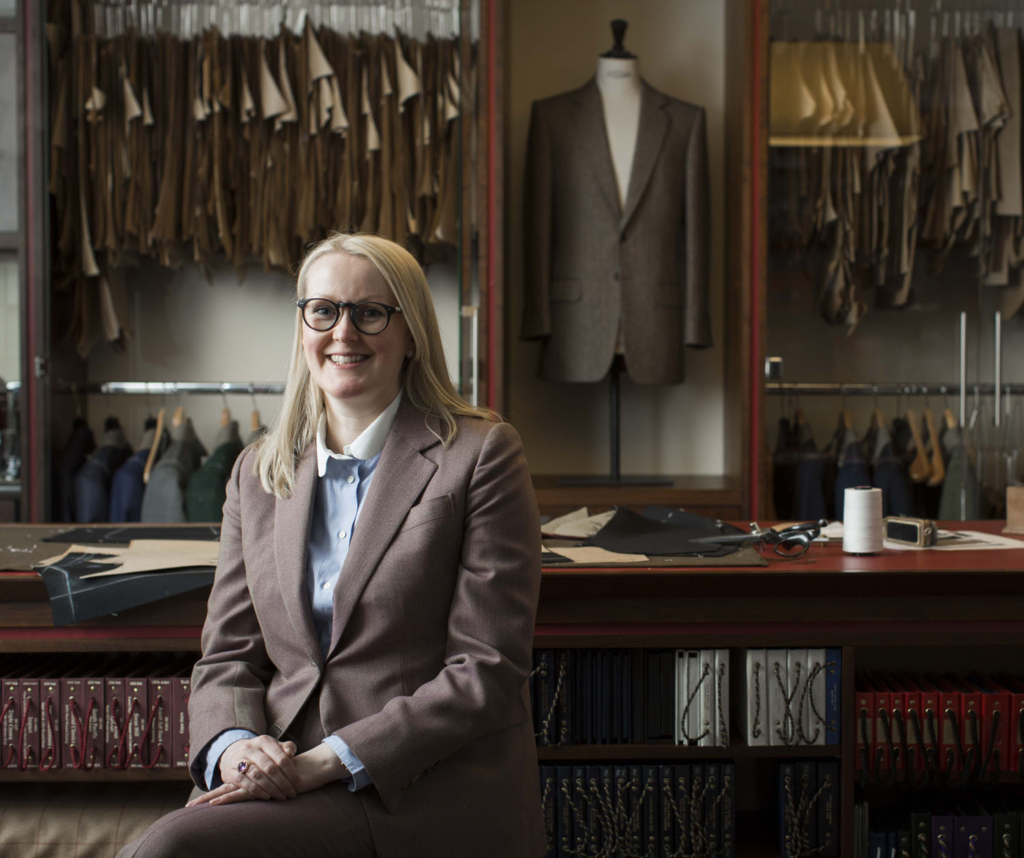
Her dream had come true, but she realised that perhaps she hadn’t been dreaming big enough. So she pushed forward, adding more “firsts” to her CV as she made her way.
In 2012, Sargent became the first woman to found her own tailoring house; in 2014, she expanded that business with the first female-founded tailoring atelier; finally, in 2016, she became the first female Master Tailor on Savile Row. This headline-making move gave her the opportunity to delve even deeper into the personalised service of bespoke tailoring.
“I started my own business to really explore the true meaning of bespoke, which I think has been slightly lost over recent years,” Sargent explains. “For me it is about the client. They are all different and they want something individual and unique. I enjoy employing my skills as a tailor, going a bit deeper to really understand what motivates them, their preferences, and their lifestyle. I like to collaborate with each person to create something special for them.”
An Honour And A Challenge
Her unique status brings with it many advantages, albeit in unexpected ways. As Sargent sees it, disrupting the Savile Row status quo has given her a platform to shore up its traditions: “I have a voice within our community. I attract attention because I am different, which allows me to speak about the things that are important to us all, the craft, the protection of the heritage and the street itself.”
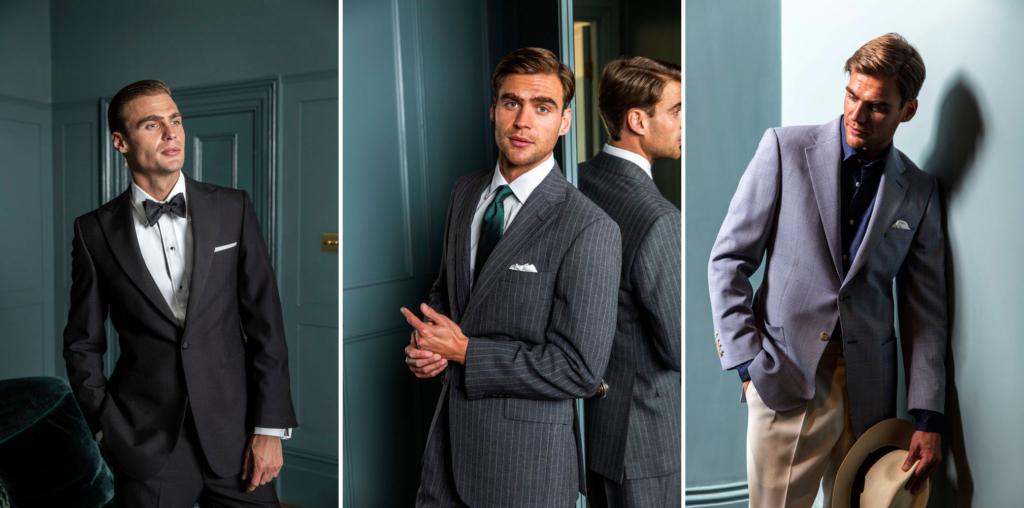
Despite this positive view, she acknowledges that her gender raised the stakes: “There is pressure on any entrepreneur who starts a business. They put so much of themselves into it, and they are determined to make a success of it – the last thing that they want to do is fail. As a woman in a male-dominated field, I felt this pressure even more so, but I am pleased to say that we are in our 8th year and going strong.”
That success may, at least in part, be down to the fact that slow fashion is having a moment. Increased awareness of the appalling environmental impact of mass-produced, rapidly changing fast fashion has boosted demand for well-made, high-quality clothes designed to last longer than one season. More recently, global lockdowns have taught us that comfort, fit and versatility are a lot more important than ever-changing trends, especially when we dress for ourselves instead of an audience. Combine the two and you get a solid case for bespoke tailoring.
But clothes aren’t the only tailored, hand-made things in Kathryn Sargent’s atelier. The interiors capture the importance of both customer service and attention to detail: “All the furniture is bespoke and hand-crafted in the UK. I wanted it to feel like a hotel reception desk and have the client area so comfortable and welcoming that it emulates a luxurious suite of a fine hotel rather than the more traditional shop feel.”
The hotel inspiration is a nod to the rooms and suites where Sargent holds fittings on her trunk show trips to North America. In her experience, the slightly less formal setting helps put clients at ease.
Fashion, Art & Flattering Cuts
Having been traditionally trained on ‘The Row’, it goes without saying that Sargent has all the skills of a traditional bespoke tailor. However, unlike many conventionally trained tailors, she also studied both art and fashion in a modern, thriving London creative scene. This unique combination allows her to blend a contemporary look and fashionable feel with her traditional craft.

Aside from the cut, she also pays attention to texture and colour to create the perfect piece for a client. “In my view,” Sargent explains, “all three need to be in perfect balance. Beautiful cloths and amazing colours that flatter and compliment the individual are equally as important as the very best cut. We look at the individual’s complexion, hair colour, their physique and how they move when selecting the right colours, patterns and shades to ensure we craft the most flattering garments.”
The glass-fronted cabinets in Sargent’s atelier hold paper patterns for garments ranging from dresses and skirts to men’s suits and separates. Nevertheless, her atelier has become known as the go-to place for ladies’ pantsuits. Sargent, quite partial to wearing suits herself, couldn’t be more pleased: “Seeing a woman in a great tailored suit feels so empowering and natural. Women are embracing tailoring and making it work for them.”
Kathryn Sargent may have been the first female Master Tailor on Savile Row, but it seems inevitable that, on both sides of the client-tailor relationship, many more women will follow.

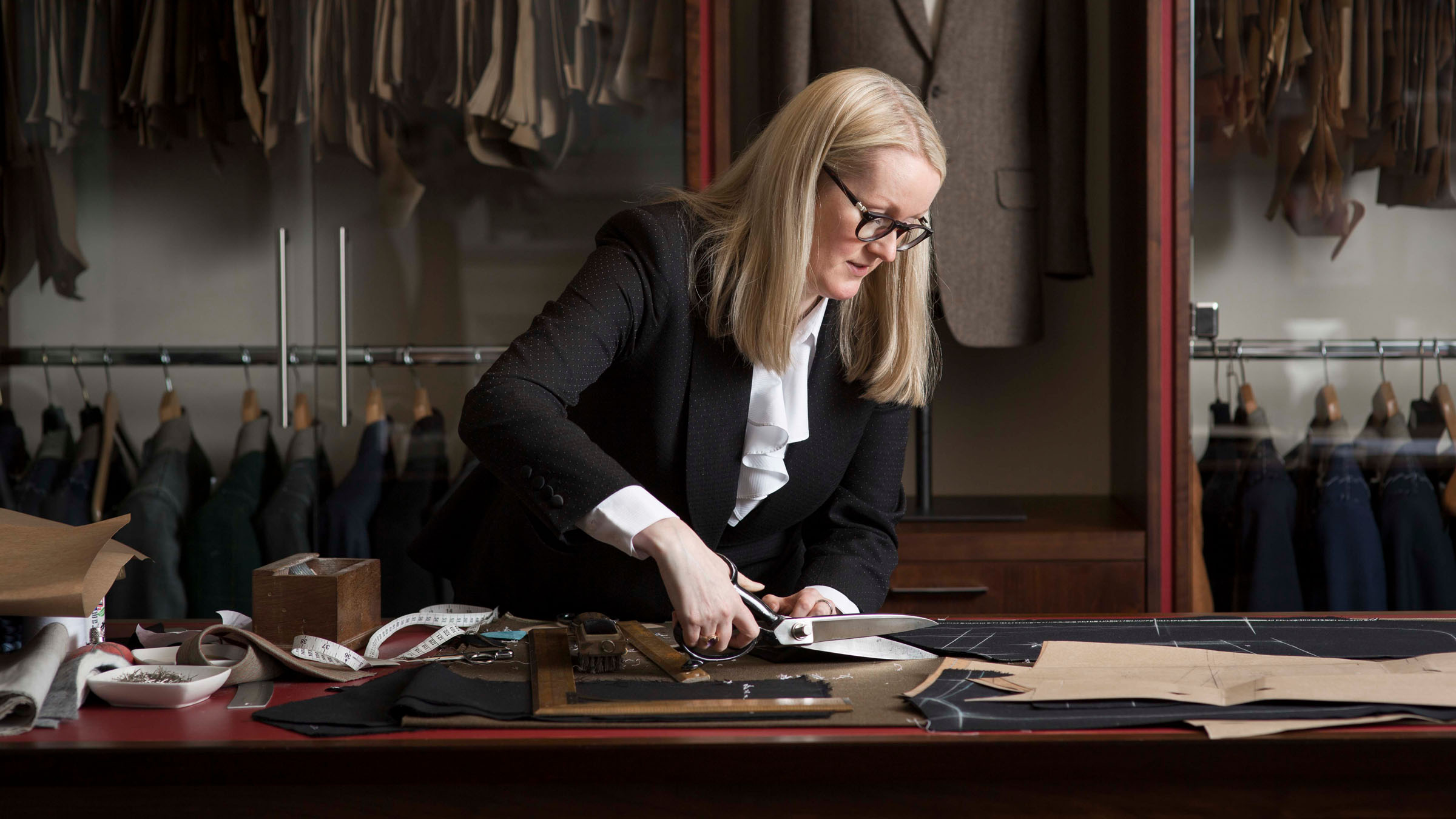




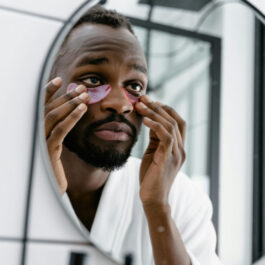


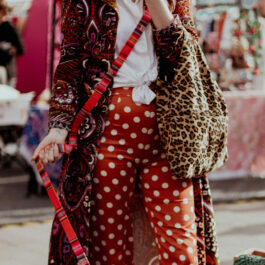

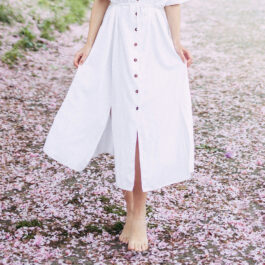


Sorry, the comment form is closed at this time.